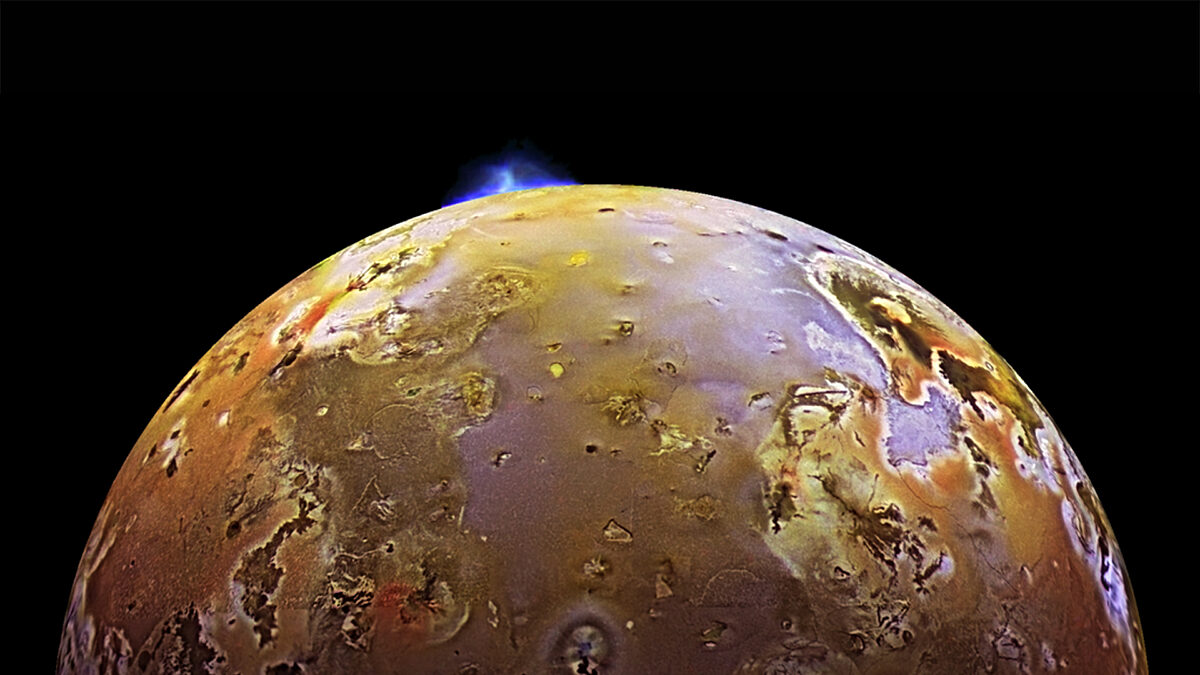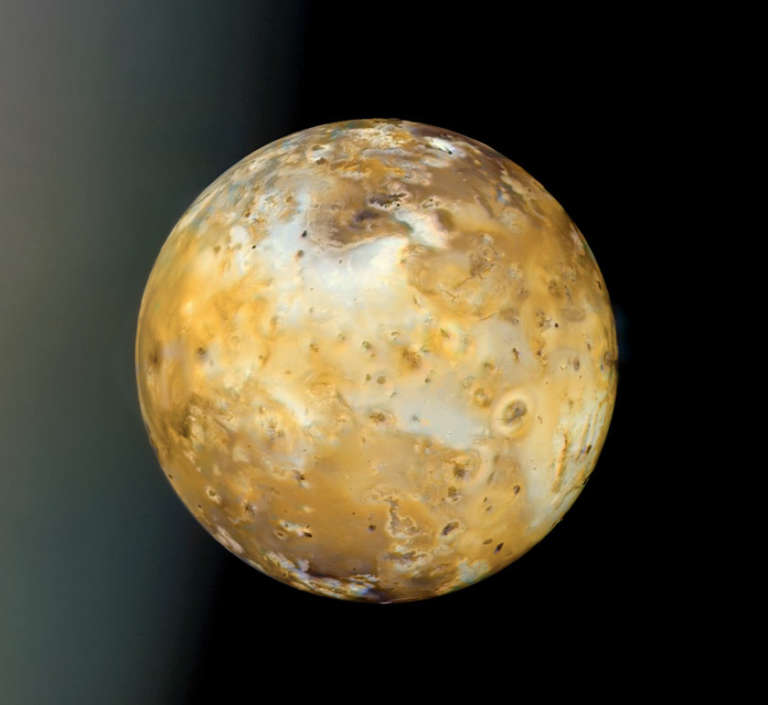Io, Jupiter’s chaotic volcano moon
Highlights
Io is the innermost and third-largest of Jupiter’s four Galilean moons.
Io is covered in hundreds of volcanoes. It is the most volcanically active world in the Solar System.
Io can help us understand volcanism and tidal heating throughout the Solar System.
While all the moons in our Solar System have their intriguing characteristics and quirks, it’s hard to imagine anything that rivals the sheer mayhem of Jupiter’s moon Io. It’s a topsy-turvy world that’s peerless in its explosiveness — it’s the most volcanically active body in our Solar System.
Though it’s not much larger than Earth’s Moon, Io couldn’t be more different than our planet’s placid companion. So what makes Io tick? What can be gleaned from its near-constant volatility?

Why we study Io
While Io and Earth both have volcanoes, eruptions on the Jovian moon are thought to be caused by very different factors. Learning more about Io can help us understand volcanism and the complex internal mechanisms in some of our Solar System’s worlds.
Io is the innermost of Jupiter’s four largest moons, which are also known as the Galilean moons (Europa, Ganymede, and Callisto are the remaining three). Because it’s the closest moon to its massive host planet, Io feels a strong gravitational pull as it orbits Jupiter. Io is also tugged on by its neighboring moons as they pass one another, making Io’s orbit around Jupiter slightly eccentric. This brings it closer to Jupiter at times, increasing the planet’s gravitational pull and warping the shape of the moon. As Io moves farther away, Jupiter’s gravitational effect weakens and the moon “relaxes.” This constant stretching and squeezing, which sounds anything but relaxing, creates movement and friction between layers of rock beneath the moon’s surface. The friction creates enough heat to melt solid rock into magma.
All this chaos creates the perfect, hectic conditions for a volcano world like no other. It’s estimated that Io is home to roughly 400 active volcanoes, the lava from which can exceed 1,000 degrees Celsius (1,832 degrees Fahrenheit). Whether that makes it a geological dystopia or utopia is for you to decide.
Io facts
Surface temperature: -130 degrees Celsius (-202 degrees Fahrenheit)
Average distance from Sun: 5.4 AU
Diameter: 3,640 km (2,260 miles)
Volume: 2.53×1010 cubic kilometers (6×109 cubic miles)
Gravity: 1.796 m/s2
Solar day: 42.5 hours
Solar year: About 12 Earth years
Atmosphere: Very thin; primarily sulfur dioxide
Missions to Io
Io was discovered in 1610 by the astronomer Galileo Galilei. However, it wasn’t until the 1960s that scientists began to understand how Jupiter’s gravitational field affects its third-largest moon.
NASA’s twin Pioneer 10 and 11 probes — which launched in 1972 and 1973, respectively — were the first spacecraft to investigate the Jupiter system in great detail. Pioneer 11 was the first spacecraft to take up-close measurements of Io.
In 1979, NASA’s Voyager 1 took pictures of Io that uncovered more about its thin atmosphere. The spacecraft was also able to capture evidence of volcanic eruptions. In the same year, Voyager 2 imaged volcanic plumes spewing material 100 kilometers (62 miles) into space. The probe confirmed six plumes that were previously spotted by Voyager 1.
NASA’s Galileo spacecraft reached Jupiter in 1995 and orbited the planet for roughly eight years, exploring several of its moons, including Io. Across six flybys, Galileo collected a vast array of infrared and visible images of Io and revealed that the moon experiences volcanic activity that could be 100 times greater than Earth’s. For context, there are about 1,350 to 1,500 active volcanoes on Earth, and a total of roughly 50 eruptions each year.
NASA’s Juno probe arrived at the Jupiter system in 2016. While the spacecraft’s primary mission focused on the gas giant, Juno has turned its attention to Ganymede, Europa, and Io in its extended mission.
In December 2022, Juno completed a close flyby of Io, which yielded a stunning infrared view of the moon’s volcanic surface and lava lakes. The Juno team plans to conduct more flybys in 2023 and 2024 in hopes of unraveling more of Io’s many mysteries.
No space agency has approved future plans for a mission to Io, though ideas like the Io Volcano Observer (IVO) have been proposed. Through a series of flybys, IVO would use its radio transmitter to investigate whether Io truly has a magma ocean hidden beneath its surface.



 Explore Worlds
Explore Worlds Find Life
Find Life Defend Earth
Defend Earth

